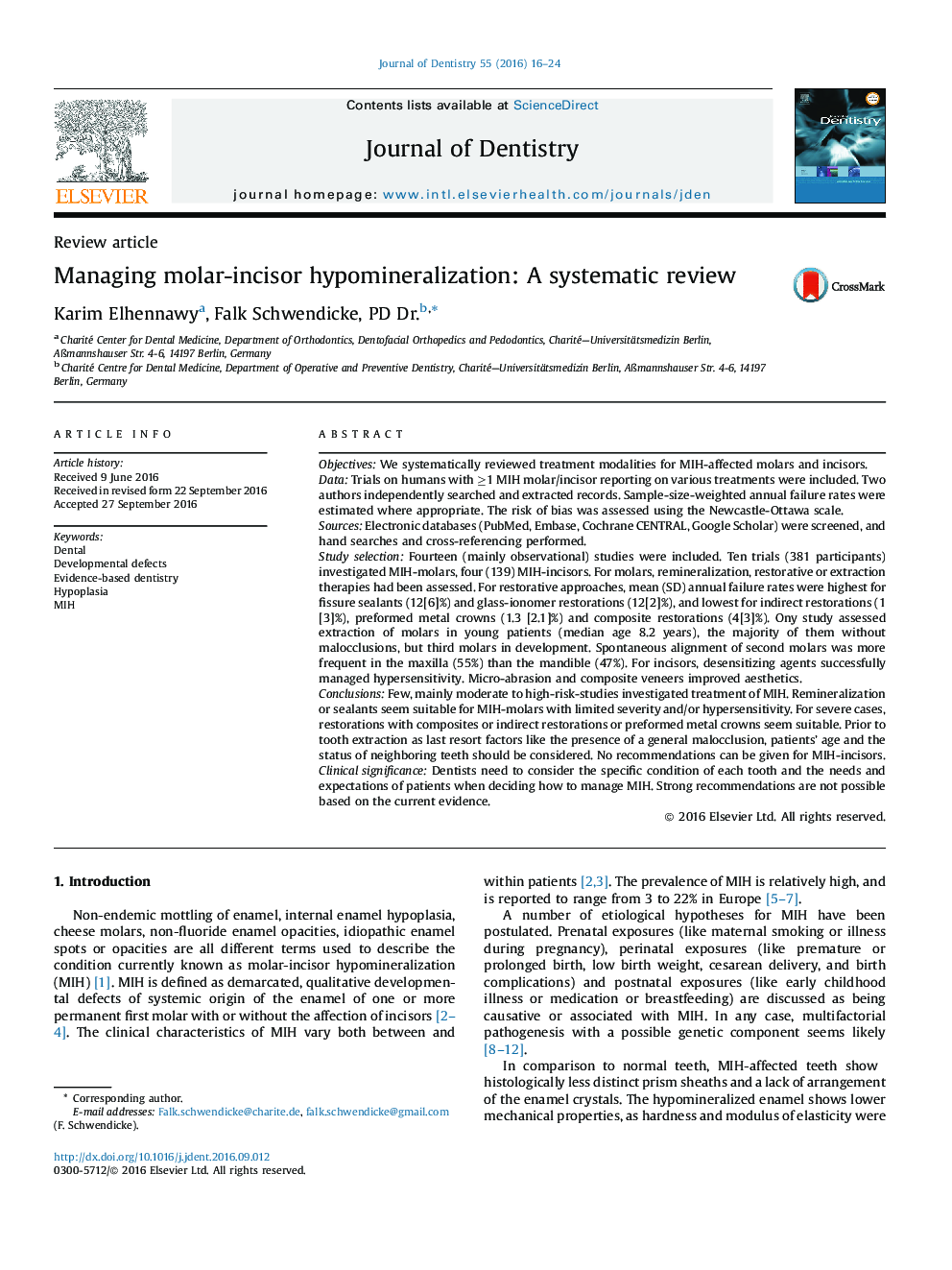| کد مقاله | کد نشریه | سال انتشار | مقاله انگلیسی | نسخه تمام متن |
|---|---|---|---|---|
| 5640596 | 1585474 | 2016 | 9 صفحه PDF | دانلود رایگان |

ObjectivesWe systematically reviewed treatment modalities for MIH-affected molars and incisors.DataTrials on humans with â¥1 MIH molar/incisor reporting on various treatments were included. Two authors independently searched and extracted records. Sample-size-weighted annual failure rates were estimated where appropriate. The risk of bias was assessed using the Newcastle-Ottawa scale.SourcesElectronic databases (PubMed, Embase, Cochrane CENTRAL, Google Scholar) were screened, and hand searches and cross-referencing performed.Study selectionFourteen (mainly observational) studies were included. Ten trials (381 participants) investigated MIH-molars, four (139) MIH-incisors. For molars, remineralization, restorative or extraction therapies had been assessed. For restorative approaches, mean (SD) annual failure rates were highest for fissure sealants (12[6]%) and glass-ionomer restorations (12[2]%), and lowest for indirect restorations (1[3]%), preformed metal crowns (1.3 [2.1]%) and composite restorations (4[3]%). Ony study assessed extraction of molars in young patients (median age 8.2 years), the majority of them without malocclusions, but third molars in development. Spontaneous alignment of second molars was more frequent in the maxilla (55%) than the mandible (47%). For incisors, desensitizing agents successfully managed hypersensitivity. Micro-abrasion and composite veneers improved aesthetics.ConclusionsFew, mainly moderate to high-risk-studies investigated treatment of MIH. Remineralization or sealants seem suitable for MIH-molars with limited severity and/or hypersensitivity. For severe cases, restorations with composites or indirect restorations or preformed metal crowns seem suitable. Prior to tooth extraction as last resort factors like the presence of a general malocclusion, patients' age and the status of neighboring teeth should be considered. No recommendations can be given for MIH-incisors.Clinical significanceDentists need to consider the specific condition of each tooth and the needs and expectations of patients when deciding how to manage MIH. Strong recommendations are not possible based on the current evidence.
Journal: Journal of Dentistry - Volume 55, December 2016, Pages 16-24